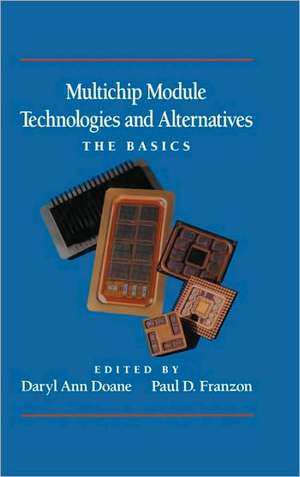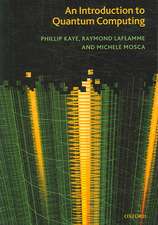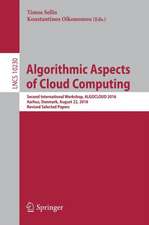Multichip Module Technologies and Alternatives: The Basics
Autor Daryl Ann Doane, Paul Franzonen Limba Engleză Hardback – 30 oct 1992
Preț: 1305.59 lei
Preț vechi: 1631.99 lei
-20% Nou
Puncte Express: 1958
Preț estimativ în valută:
249.90€ • 271.54$ • 210.05£
249.90€ • 271.54$ • 210.05£
Carte tipărită la comandă
Livrare economică 21 aprilie-05 mai
Preluare comenzi: 021 569.72.76
Specificații
ISBN-13: 9780442012366
ISBN-10: 0442012365
Pagini: 875
Ilustrații: XXXII, 875 p. In 2 volumes, not available separately.
Dimensiuni: 152 x 229 x 46 mm
Greutate: 1.35 kg
Ediția:1993
Editura: Springer Us
Colecția Springer
Locul publicării:New York, NY, United States
ISBN-10: 0442012365
Pagini: 875
Ilustrații: XXXII, 875 p. In 2 volumes, not available separately.
Dimensiuni: 152 x 229 x 46 mm
Greutate: 1.35 kg
Ediția:1993
Editura: Springer Us
Colecția Springer
Locul publicării:New York, NY, United States
Public țintă
ResearchDescriere
Far from being the passive containers for semiconductor devices of the past, the packages in today's high performance computers pose numerous challenges in interconnecting, powering, cooling and protecting devices. While semiconductor circuit performance measured in picoseconds continues to improve, computer performance is expected to be in nanoseconds for the rest of this century -a factor of 1000 difference between on-chip and off-chip performance which is attributable to losses associated with the package. Thus the package, which interconnects all the chips to form a particular function such as a central processor, is likely to set the limits on how far computers can evolve. Multichip packaging, which can relax these limits and also improve the reliability and cost at the systems level, is expected to be the basis of all advanced computers in the future. In addition, since this technology allows chips to be spaced more closely, in less space and with less weight, it has the added advantage of being useful in portable consumer electronics as well as in medical, aerospace, automotive and telecommunications products. The multichip technologies with which these applications can be addressed are many. They range from ceramics to polymer-metal thin films to printed wiring boards for interconnections; flip chip, TAB or wire bond for chip-to-substrate connections; and air or water cooling for the removal of heat.
Cuprins
Forward. Preface. Acknowledgements. Introduction. Part A: The framework. MCM package selection: a materials and manufacturing perspective. MCM package selection: a systems need perspective. MCM package selection: cost issues. Part B: The basics. Laminate-based technologies for multichip modules. Thick film and ceramic technologies for hybrid multichip modules. Thin film multilayer interconnection technologies for multichip modules. Selection criteria for multichip module dielectrics. Chip-to-substrate (first level) connection technology options. MCM-to-printed wiring board (second level) connection technology options. Electrical design of digital multichip modules. Thermal design considerations for multichip module applications. Electrical testing of multichip modules. Part C: Case studies. The development of Unisys multichip modules. High performance aerospace multichip module technology development at Hughes. Silicon-based multichip modules. The technology and manufacture of the VAX-9000 multichip unit. Part D: Closing the loop. Complementing technologies for MCM success. Epilogue. Index.





















